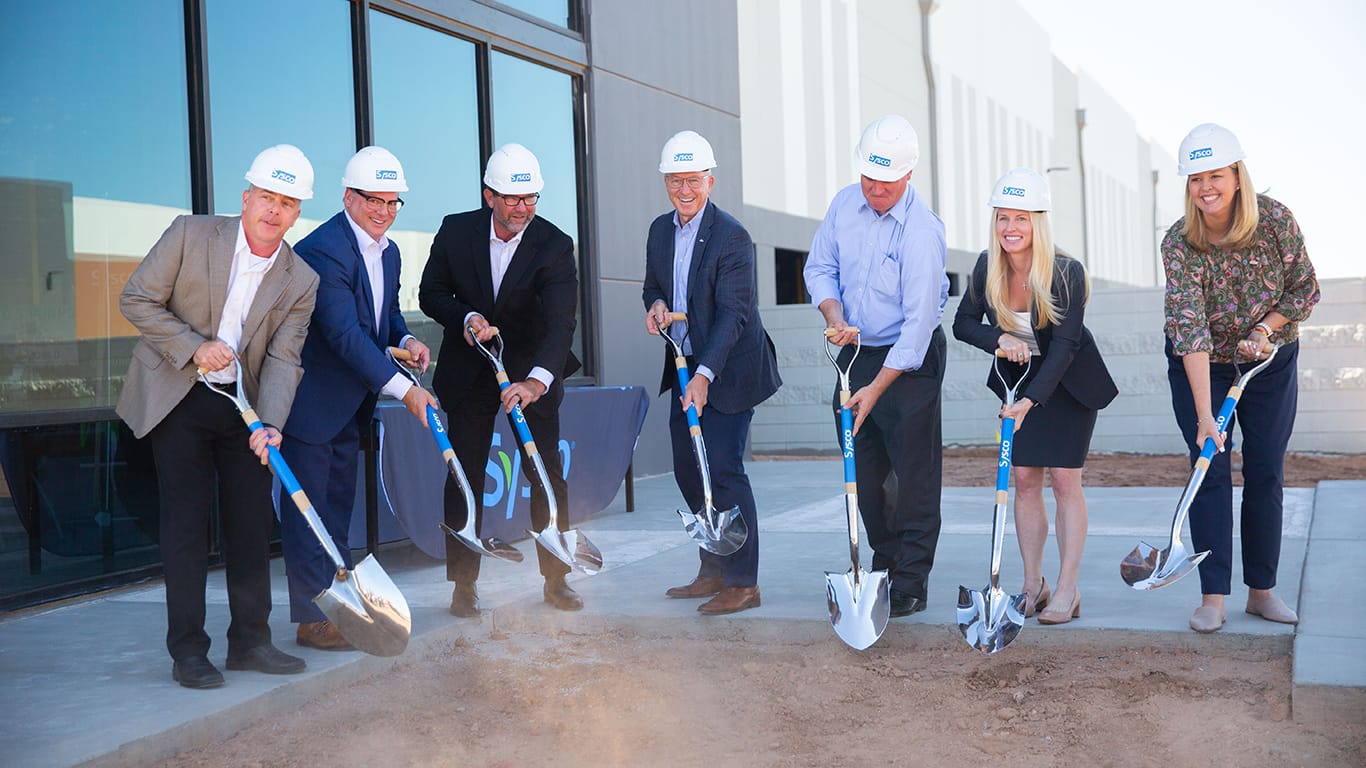When the bicycle, automobile and even cheeseburger were first released into mainstream culture, all three received their fair share of skepticism. In fact, according to Vox.com, the Washington Post went as far as to call bicycling “a hot fad for fancy ladies” in 1890. But the visionaries behind these creations knew they were on to something — and something big. The same goes for the innovators behind Arizona State University (ASU) Polytechnic campus and its new (Interdisciplinary Science and Technology 12) ISTB12 building.
READ MORE: Ranking Arizona: Top 10 law firms for 2024
DEEPER DIVE: Ranking Arizona: Top 10 hospitals for 2024
For the educators, builders and creators behind the $185 million ISTB12 building on the ASU Polytechnic campus, they know the programs and partnerships housed within will yield incredible dividends for the Phoenix East Valley advanced manufacturing, logistics, aerospace, semiconductor and additional industries for years to come.
Thankfully, unlike the inventors behind the bike, car and cheeseburger, those involved with the conception and expansion of the ASU Polytechnic campus have the benefit of a tried and true reputation for forward-thinking and excellence in innovation.
“[The Polytechnic campus] really goes back to the days of Williams Air Force Base in the 1990s,” says Mesa Mayor John Giles, “when the Air Force decided to close Williams Air Force Base and gave the keys to the City of Mesa and some of the keys to ASU. Watching the progression of the Polytechnic campus since that time has been fun to see.”
ISTB12 takes shape
Added to ASU’s proven record in planning for the future, continuing to keep time with the latest education, application and advancements in manufacturing and technology, has made the decision to expand the Polytechnic campus an easy one.
“There was always a manufacturing technology program here at ASU as a full degree a couple of years back,” says Binil Starly, director and professor at ASU School of Manufacturing Systems and Networks. “And then it became a concentration. But then ASU said, ‘With all these manufacturing companies moving in, you know what? We are going to have an entire new school.’ This school will focus itself on manufacturing systems with the new forms of digitization that’s happening in factories.”
And, as Morgan Olsen, executive vice president, treasurer and CFO of ASU explains, “polytechnic really means learning through doing.”
Olsen goes on to note that because ASU’s Polytechnic campus is focused on hands-on learning, designed for engagement with local industry, it fits with ISTB12’s design intent.
“Being able to have some high-base spaces that would allow work with various types of robots, including drones being a type of autonomous vehicle or robot is part of that,” he says. “There will also be labs that will support certain aspects of research around the semiconductor industry. Artificial intelligence and particularly how that’s applied to manufacturing systems and processes, are all part of the work that will be going on in that school and ultimately in this building when we open it.”
Adds Starly, “There’s a significant amount of automation and robotics that’s making its way into the factory. This building — has the infrastructure for training students with the use of industrial robots, training students with the new kinds of processes that these companies might have inside their factory.”
Workforce pipeline infusion
The School of Manufacturing Systems and Networks housed within ISTB12, due to its hybrid model of educational instruction and hands-on training, will further enrich the Phoenix East Valley’s workforce pipeline (and beyond).
“At the bachelor’s level, we already have two academic programs to train the next generation of engineers who will work for these industries if they choose to be in Arizona,” Starly says. “These programs are really meant for these students to supply the workforce needed.”
Currently, the School of Manufacturing Systems and Networks has around 250 students, according to Starly, with the hope of expanding to a 3,000 to 4,000 student population.
With the addition of ISTB12 and its programs, Olsen says the greater Polytechnic campus goal is to grow the enrollment to 15,000 students,” he notes.
Adds Giles, “This advanced manufacturing school is going to be training the engineers and the workforce for all the advanced manufacturing that’s happening right across the street.”
The activity Giles refers to is the hive of economic development taking place around the Mesa-Gateway Corridor.
“Apple, Google, Meta and Amazon are all building multi-billion dollar facilities in some cases, and you’ve got a lot of a microchip supply chain going in out there,” he says, “and a lot of other advanced manufacturing.”
Giles also mentions the area adjacent to the ISTB12 building, which encompasses a hybrid research/industrial park.
“A lot of the businesses want to be next to the people who are coming out of that school,” Giles says. “They’re going to want to build a business in that research park adjacent to the college campus.”
Pipeline = partnerships
Because of the surge in both skilled and qualified students graduating from the School of Manufacturing Systems and Networks and advanced manufacturing development surrounding the Polytechnic campus, ASU’s ISTB12 crew has already forged significant and valuable partnerships with local businesses.
Starly notes that Intel, Honeywell, Amos Mfg., National Laboratories, FANUC and Rockwell Automation have all engaged with the Polytechnic campus.
“FANUC is probably the world’s largest industrial robotics company,” he says. “Of course, they’re based in Wisconsin and Michigan areas, but they don’t have a presence in the Southwest. So we have now entered into a relationship with FANUC and they can supply the robots, we can train the students and hopefully their hope is that companies can then adopt their robots.”
In addition to the relationships that advanced manufacturing and logistics companies have solidified with ASU’s Polytechnic campus, additional related industries and sub industries are reaping the benefits of talent graduating from the campus, and will continue to do so even more with the completion of ISTB12.
“We have faculty that are experts in cyber manufacturing, robotics and smart manufacturing [as examples],” Olsen says. “And that can be applied to a wide range of industries in the East Valley. That part of the Valley has really come alive in the last five years. And the pace of development there is pretty significant, in addition to aerospace and aeronautics.”
Naturally, because of the diverse talent the Polytechnic campus is feeding into the workforce pipeline, it has become a key economic driver for the region and beyond.
“Whenever I have the opportunity to talk to one of these big businesses that we’re romancing, trying to talk into coming or they’re here and we’re congratulating, I promise you the first topic of conversation is workforce,” Giles says. “Because if a company is going to invest $1 billion or more in your city, they really want to make sure that there’s going to be people that can walk into that building and bring it to life and make it work.”
ISTB12 timeline
Once completed, ISTB12 will be a 173,194-square-foot building consisting of three floors, 128,828 programmable square feet for office, meeting, instructional, research and collaboration spaces, including labs specializing in additive manufacturing, robotics for smart manufacturing and industry automation, cyber manufacturing and operations research, semiconductor manufacturing, and manufacturing systems for the energy sector.
“The building itself we think will be done for the fall 2025 semester,” Olsen says.
Adds Starly, “My hope is that once the building comes, we’re going to see a lot more partnerships that can further enhance the quality of the academic programs as well as the research that will come out of it.”




